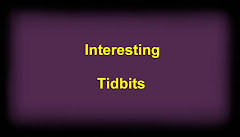.jpg)
In Best Practices from High-Performing Middle Schools, UAlbany School of Education researhers detail how some middle schools consistently foster better academic performance, regardless of challenges.
Middle schools teach students at one of the most vulnerable times of their lives. Yet in every testing cycle, middle grade results tend to show less progress than either elementary or high school. Now, as educators and policymakers focus on reducing the high school dropout rate, some point to the middle grades as the place where problems start.
Do any middle schools "get it right?" Yes, say two researchers from the University at Albany’s School of Education. In Best Practices from High-Performing Middle Schools, visiting professor Kristen Wilcox and Janet Angelis, associate director of UAlbany's Albany Institute for Research in Education (AIRE), share what they have learned about how some middle schools consistently foster better academic performance, no matter what challenges their students bring to school.
Having compared schools whose students consistently do well on annual high-stakes tests of English and math to those whose students get average results, the authors identify five key elements of best practice that distinguish higher-performing middle schools:
Trust and respect. They hold everyone to the same expectation of respect for others, whether they are inside the school or in the school’s community. This climate of respect establishes an atmosphere conducive to learning and teaching. It provides the backbone for a successful school.
Teamwork. People work together. Teachers meet regularly to discuss student progress, to coordinate lessons, and to plan curriculum. Furthermore, teachers feel safe to share problems and work together to solve them. They invite parents and community members to join key committees that make important decisions about the school.
Evidence. Teachers and administrators study results before making program decisions. They do research to see how a new program works before trying it out. Teachers look at how their own students are performing, compare results with other teachers, make adjustments and check again. And they do this all along, not just at the end of the year; this way they can catch and address problems before they get out of hand.
Social and emotional well-being. Since social and emotional issues can get in the way of learning, educators find ways to help every student feel that he or she belongs in the school. They make sure that every student has at least one adult to turn to; they also offer a wide variety of activities, clubs, and sports and provide guidance and other social services for students who need them.
Shared mission. Finally, higher-performing schools have a clear mission and have set goals that everyone agrees with and works toward. School board members, teachers, and administrators share a vision of student success, and everything they do is to help achieve that vision. In effective schools the vision includes always trying to do better.
According to the authors, effective middle schools demonstrate all five of these attributes, not just one or a few. Together they provide the supports needed to help adolescents perform well during the middle-school years, and Best Practices from High-Performing Middle Schools is replete with examples of how the successful schools have done it.
Contact(s): Catherine Herman (518) 956-8150
Tuesday, November 24, 2009
University of Albany School of Education Researchers Author 'Best Practices from High-Performing Middle Schools'
Posted by
BRE
at
3:08 AM
![]()
Subscribe to:
Post Comments (Atom)

.jpg)




.jpg)
+(2).jpg)
.jpg)
.jpg)

.jpg)
+(2).jpg)
+(2).jpg)
+(2).jpg)
_(2)+(2).jpg)
+(2).jpg)
+(2).jpg)
_(2)+(2).jpg)
+(2).jpg)


.jpg)
.jpg)
+(2).png)
+(2).jpg)
.jpg)
.jpg)
+(2).jpg)
+(2).jpg)
+(2).jpg)
.jpg)
+(2).jpg)
+(2).jpg)
+(2).jpg)
_(2)+(2).jpg)
+(2).jpg)
.jpg)
+(2).jpg)
+(2).jpg)
+(2).jpg)
.jpg)
.jpg)
+(2).png)
.jpg)
.jpg)
.jpg)
.jpg)
+(2).jpg)
+(2).jpg)

.jpg)

+(2).jpg)
.jpg)
.jpg)
.jpg)
.jpg)
.jpg)
.jpg)
.jpg)
.jpg)
.jpg)
.jpg)
.jpg)
.jpg)
.jpg)
.jpg)
.jpg)
.png)
.png)
.jpg)
.jpg)
.jpg)
.jpg)
.jpg)
.jpg)
+(2).jpg)
.jpg)
+(2).jpg)
.jpg)
+(2).jpg)
.jpg)
.jpg)
.jpg)
.jpg)
.jpg)
.jpg)
.jpg)
.jpg)
.jpg)
.jpg)
.jpg)
.jpg)
.jpg)
.jpg)
.jpg)
.jpg)
.jpg)
.jpg)
.jpg)
.jpg)
.jpg)
.jpg)
.jpg)
.jpg)
.jpg)
.jpg)
.jpg)
.jpg)
.jpg)
.jpg)
.jpg)
.jpg)
.jpg)
.jpg)




No comments:
Post a Comment